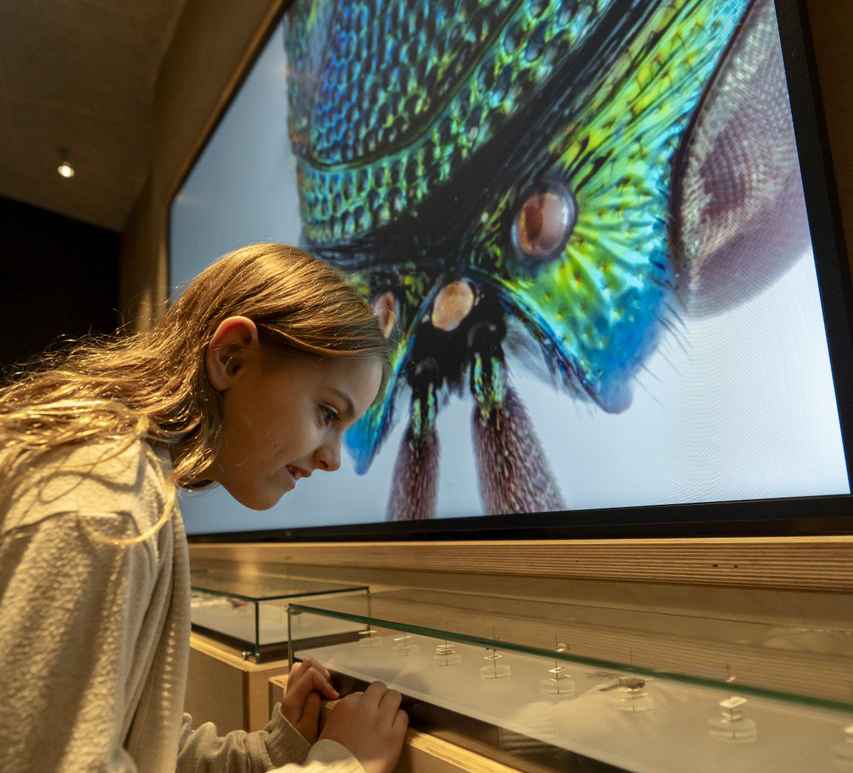Well, it has been an extremely long time since I last wrote a blog, for which I apologize. I know I have some trusted blog followers who have been waiting and waiting for the next update on the Western Painted Turtles in Wascana. To break the drought, you will be rewarded with multiple pictures of adorable turtles (And possibly some hatchlings... Don’t cheat and scroll ahead!).
This field season was off to a rolling start, as it has been busy, busy, busy since day one (hence my lack of blog writing). Remember that 30C week we had in May? I do. Lots of the turtles were moving a lot more and a lot further than last spring, but this was typical due to the temperatures. Once the temperatures dipped back into somewhat more seasonal ranges, things slowed back down a bit but I was still kept on my toes. This year I added five more males to the study to try and even out the sex ratio of the turtles I was catching; it was (and still is) biased towards females. However, with a few more males it will make comparisons between the sexes movement and habitat use a little more reliable. With these five extra turtles, it means that my field tech Jessica and I are tracking 28 turtles, which means that we have our work cut out for us.
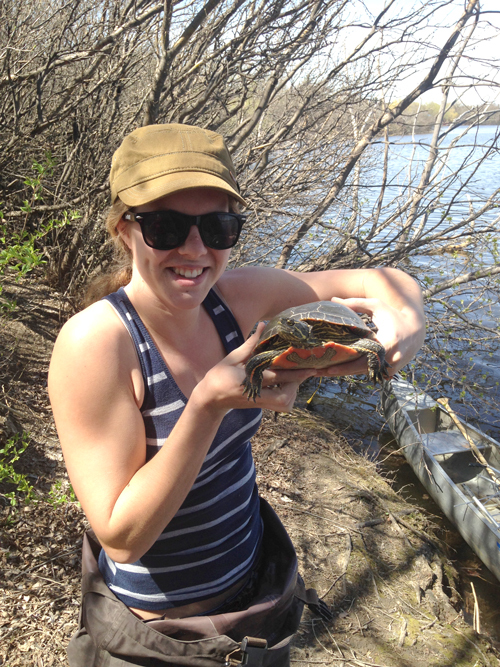
My field tech and trusty sidekick for the summer, Jessica.
We’ve had a few highlights so far this season that I wish to share with you all:
- So far, we have processed 48 turtles! SO MANY TURTLES!! If you count another highlight, that number could be bumped up to 56… Buuuuuttt lets not get ahead of ourselves here. Many of these captures are recaptures, and granted 21 of the 48 did in fact of transmitters on them, however, most of the turtles with transmitters were caught without “cheating” (i.e. using radio telemetry), and even when we do use radio telemetry to find where the turtles are, they are truly much, much faster than everyone gives them credit for -- so it's really a difficult task. Of the 48, most are recaptures with only 5 brand new to the study turtles. This is disheartening to me because I love catching new turtles but the fact that my techs and I have caught 66 turtles in just over a year is pretty fantastic, I think. Also to think that a lot of people in Regina didn’t even know of the Western Painted Turtles existence in the marsh!
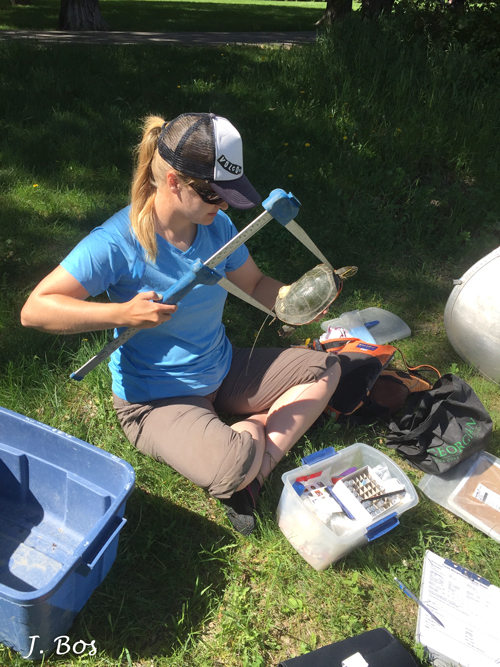
Processing a Western Painted Turtle, which involves various body size measurements, body weight, a nail sample, and a blood sample (if it’s a new turtle).
- So is it 48 captures or 56? Those are two very different numbers. Well, on a very exciting day in May we came across a freshly emerged CLUTCH OF EGGS!! To many people, this probably isn’t that exciting but to me it was the most exciting thing that has happened this year. Here's some background information: I have been helping turtle research projects for the last five years and I know where some successful nest sites were (both on previous projects and from last year's nesting surveys). Across these years, never have I ever come across new hatchlings… Ever. So as we were launching our canoe on that one magical day in May, I looked at my feet and I saw this little wee turtle walking across the land. My tech and I immediately stopped what we were doing, I let out a few squeals (baby turtles are ridiculously adorable), and we set out to process this wee gaffer. Well, as we were doing so we found three of its brothers/sisters walking through the vegetation (insert more squeals here). By the time we were finished processing them all, we had not one, not four, but EIGHT baby hatchling turtles. They were all roughly the same size, but one thing that I think is super amazing were their plastron designs. As you may recall, Western Painted Turtles all have unique black, red, yellow/cream designs on their plastron (belly shell). These are sort of like our finger prints, each swirl and swoosh is 100% different from another. Now here I was with eight baby turtles all from the same clutch (group of eggs), and no two hatchlings had similar designs. How neat is that!? Once these turtles were processed, they were promptly brought to the water and we watched them swim away. Now one thing to keep in mind, if you do have the magical opportunity to come across a hatchling, please bring it to the nearest bank by the water and let it clamber in on its own. It may scurry off right away, it may sit there for several minutes trying to figure out what its supposed to do. It may walk in the water, and then quickly turn back, and climb back on land, then after a few more moments go back into the water (all of these scenarios occurred with our little dudes and dudettes). Whatever you do, please do not bring these baby turtles home as a pet. They are wild animals and although they may not look like they know what they need to do, keep in mind that they are less than a year old and seeing water (and the whole world for that matter) for the first time. They won't stay small forever, they could grow to be as big as Olga and they will probably outlive you.
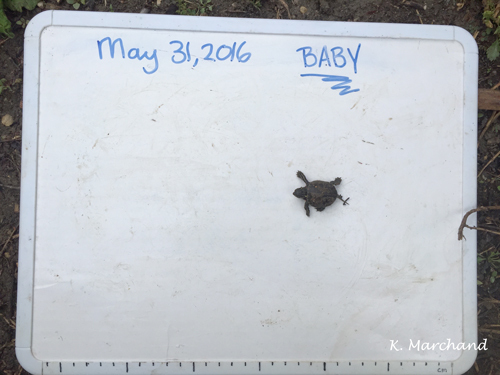
And all the internet gave out a giant squeal of delight. “One small step for man, one giant bound across the whiteboard for the hatchling.” Even when they’re small, they are impeccably fast.
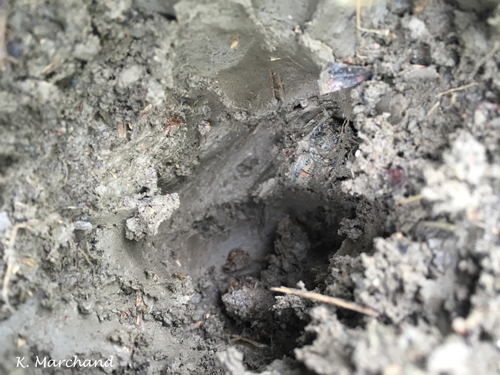
One little gaffer was a wee bit stuck in the mud/clay and needed a helping hand from the blonde friendly giant peering into its hole. Can you spot the hatchling? It wasn’t previously this exposed, I had dug away carefully at the hole for about 5 mins for it to be that exposed.
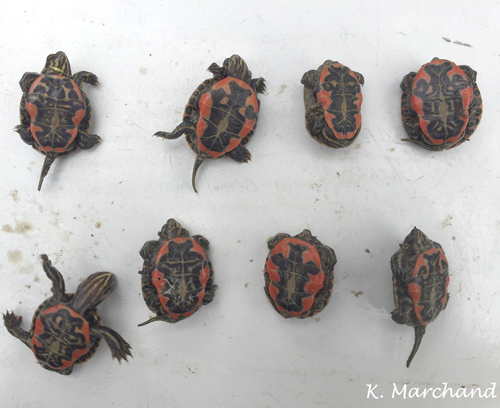
Eight baby turtle siblings with eight 100% unique plastron designs. The turtle in the bottom left (aka Usain Bolt) was so speedy and was having none of the picture taking nonsense.
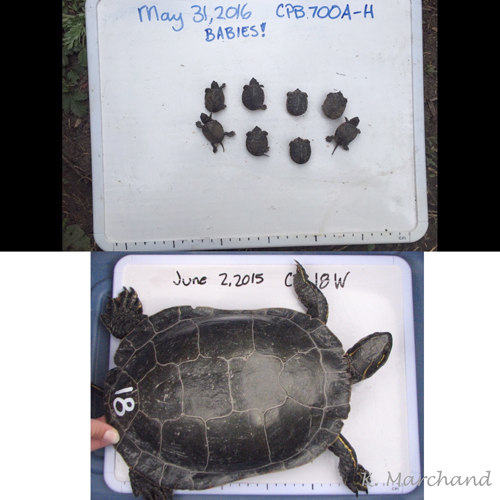
It boggles my mind that something so teeny, tiny can grow to be as big and massive as Olga (that’s the exact same whiteboard).
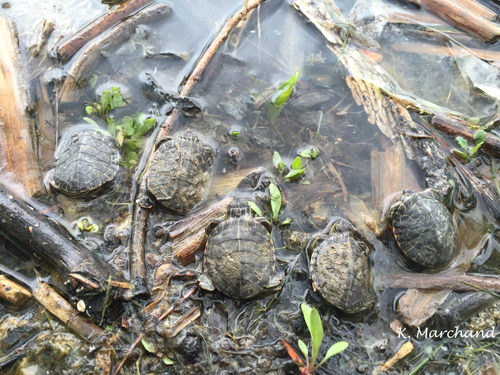
Sometimes going out into the world is a little scary, so you have to sit there absolutely terrified with four of your closest friends until you all have the guts to start swimming…sometimes this takes a while.
- Speaking of hatchlings, what about nesting season?! Which brings me to my third and final highlight: the positive location of six female turtle nests around Wascana! YAY!! Nesting season is upon us. In fact, it started a week earlier than last year. Nesting season means that female turtles are moving out of the water, up onto land (typically at dusk and dawn), in order to find suitable nesting locations. My tech and I have been out almost every night since nesting season began, which has allowed us to positively know the nesting location of six turtles, plus find a few other areas where females are digging around. However, for whatever reason, they didn’t complete their hole. Unfortunately, these Western Painted Turtle ladies enjoy the fitness path, as do most speedy bikers, and dog walkers, which means that these little ladies are getting scared off their nests. This isn’t to say that bikers and dog walkers need to stay away, but please be vigilant to our shelled friends who are trying to lay their eggs. If you see your dog sniffing in the long grasses, try and pull him or her back towards you, in case its poking its nose into a turtle's face. If you’re biking along, perhaps slow your pace a little bit along the north shore of Wascana marsh so that the whirring speed of your wheels doesn’t scare a mama turtle back to the marsh. Lastly, if you are lucky enough to spot a turtle nesting, please keep your distance. These ladies have a big, hard job to do. The prairie soil they are trying to lay their eggs in is incredibly hard and so digging their nest takes a long time and then once they’ve dug the nest, they have to lay all their eggs and cover them back up. This is very energy taxing, especially if they dig their hole and then get scared away. For whatever reason, I haven’t seen a female use the same hole that she started the night before. So each morning and evening, they start from scratch. So if you see a female turtle on land, please try and keep your distance. Please don’t go up to it to get pictures, please don’t take selfies with it, just take a moment to observe and enjoy nature and then let mama turtle do her thing undisturbed. We live in such a digital world that our first instinct is to snap a picture to get lots of likes and shares on social media (I am 100% guilty of this), but if that picture disrupts nature and forces a female turtle to abort nesting for the evening, is it worth that one picture? Last summer I had a female that kept getting startled by dogs and walkers, that even when I guarded her while she dug and tried to keep people away from her, she would still abandon her nest site. She ended up dropping her eggs into the water. These turtles are extremely skittish, so please keep your distance and observe them using zoom or binoculars.
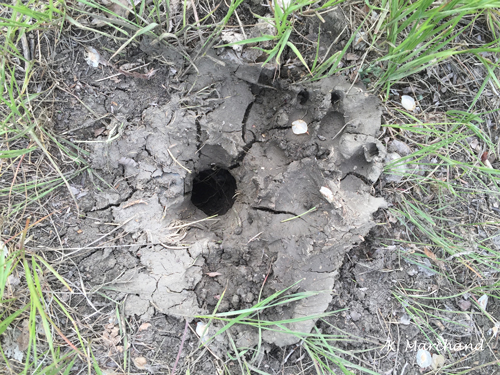
An abandoned nest hole.
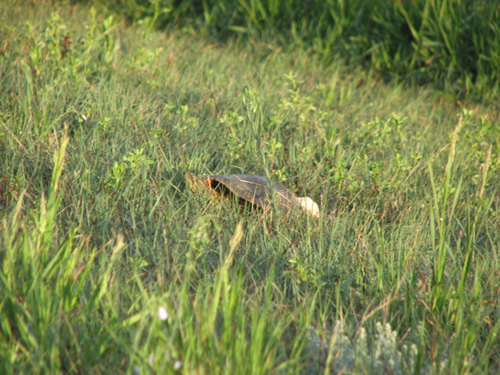
Zoom is a magical thing. It leads to somewhat blurry pictures, yet it still captures the awesomeness of finding a nesting turtle without disturbing her too much. I will say however, that she was 100% aware of my presence and stopped digging until I walked by and was further away. I watched over this female for just over two hours, through that hole time she was digging and digging and digging. She did end up successfully finishing her nest, however, it’s a great example of how long it takes for these females to dig in our prairie ground.
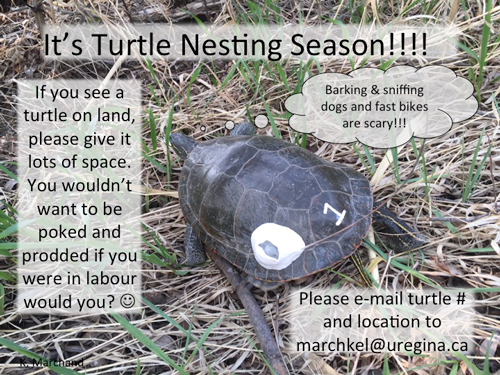
If you see a turtle on land, please let me know!
With that I will end off this blog. As always if you see a turtle, please let me know! Send an e-mail with its location, time, behaviour, shell number (if visible without getting too close) and a little picture to turtles@royalsaskmuseum.ca. Also if you have any questions or comments, please send them along as well!
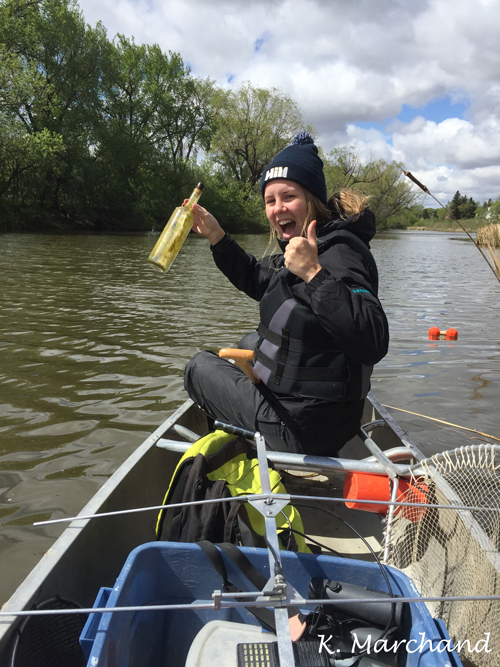
As hilarious as finding eight messages in a bottle has been, please don’t purposefully pollute Wascana.
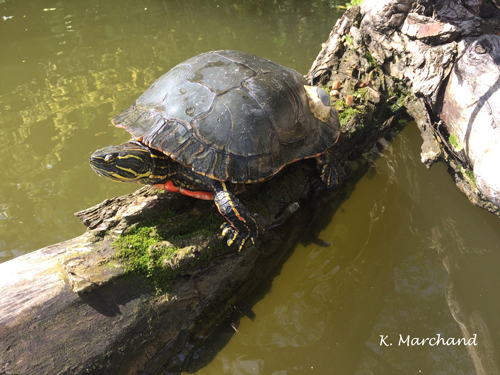
Care free Houdini, catching some solar rays on a log in the lake.
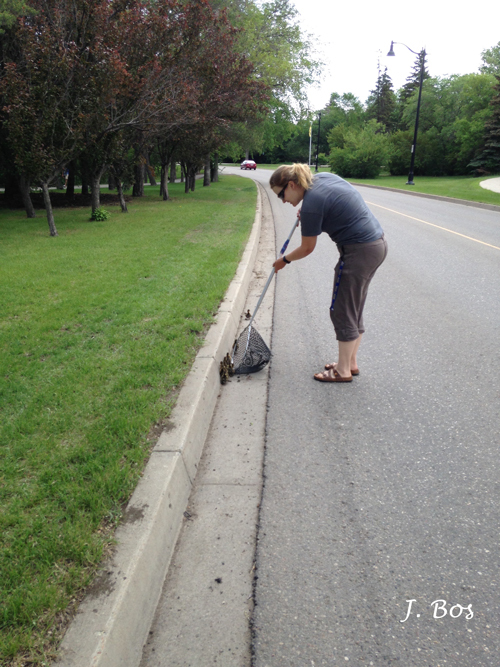
Officially adding duckie saver to the CV. The curb was a wee bit too big for the little duckies to follow mama duck so I gave them a helping hand. NOTE: This was in Wascana Park on a low traffic day. Had this been a high traffic day, situations would be different to ensure the safety of myself and any drivers, as adorable as those cute little fluff balls were.
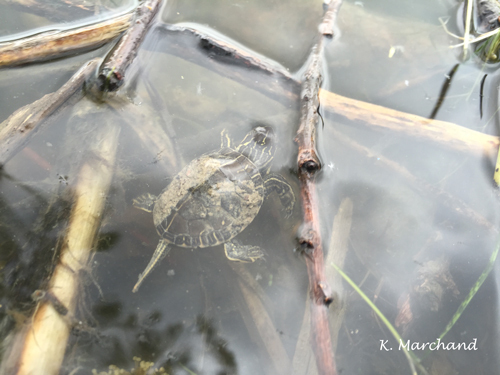
Lastly, a baby hatchling taking his/her first swim….aawwweeeeeee!

